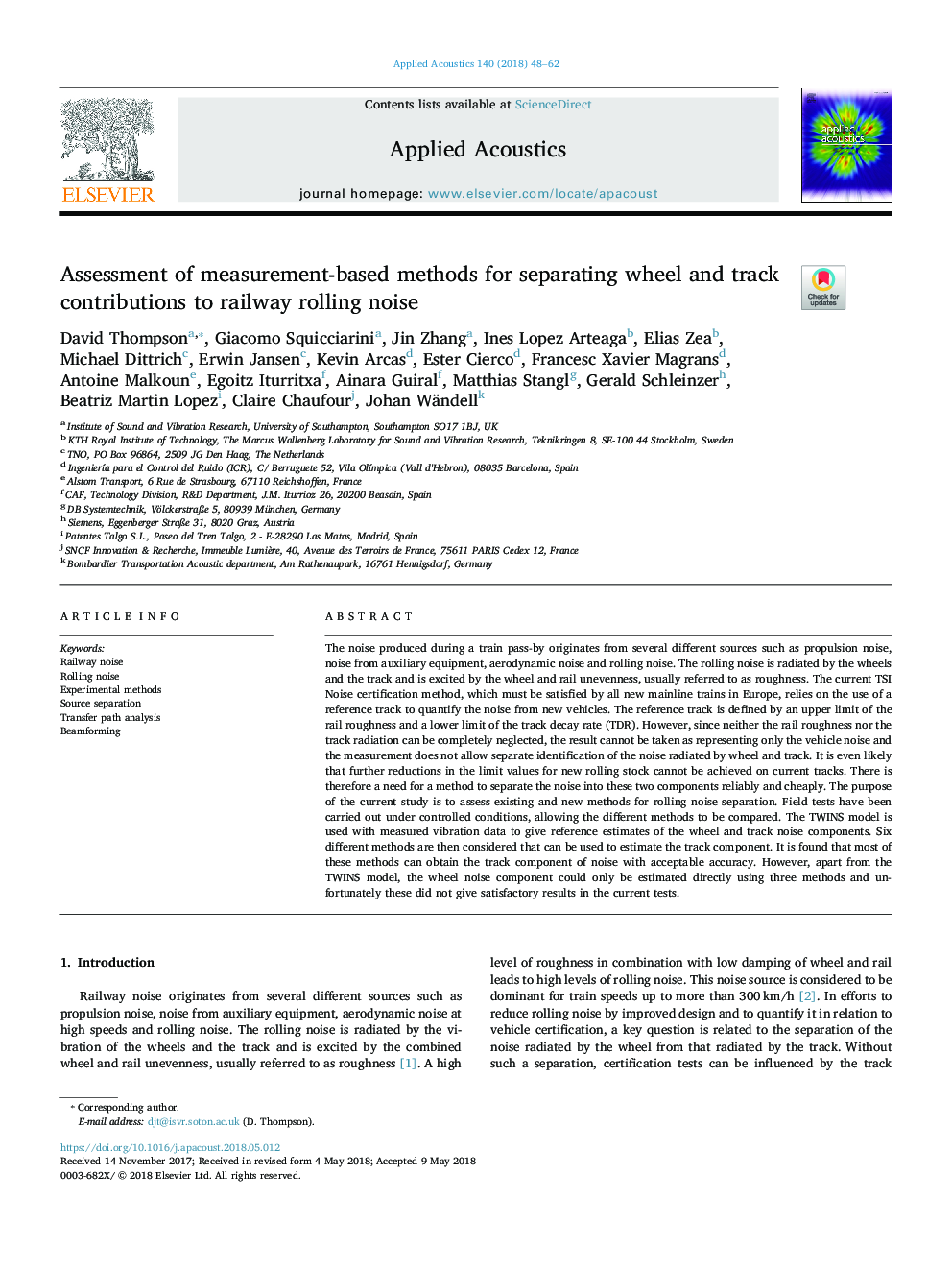| کد مقاله | کد نشریه | سال انتشار | مقاله انگلیسی | نسخه تمام متن |
|---|---|---|---|---|
| 7152054 | 1462370 | 2018 | 15 صفحه PDF | دانلود رایگان |
عنوان انگلیسی مقاله ISI
Assessment of measurement-based methods for separating wheel and track contributions to railway rolling noise
ترجمه فارسی عنوان
ارزیابی روش های مبتنی بر اندازه گیری برای جداسازی کمک های چرخ و آهنگ به سر و صدای رانندگی راه آهن
دانلود مقاله + سفارش ترجمه
دانلود مقاله ISI انگلیسی
رایگان برای ایرانیان
کلمات کلیدی
موضوعات مرتبط
مهندسی و علوم پایه
سایر رشته های مهندسی
مهندسی مکانیک
چکیده انگلیسی
The noise produced during a train pass-by originates from several different sources such as propulsion noise, noise from auxiliary equipment, aerodynamic noise and rolling noise. The rolling noise is radiated by the wheels and the track and is excited by the wheel and rail unevenness, usually referred to as roughness. The current TSI Noise certification method, which must be satisfied by all new mainline trains in Europe, relies on the use of a reference track to quantify the noise from new vehicles. The reference track is defined by an upper limit of the rail roughness and a lower limit of the track decay rate (TDR). However, since neither the rail roughness nor the track radiation can be completely neglected, the result cannot be taken as representing only the vehicle noise and the measurement does not allow separate identification of the noise radiated by wheel and track. It is even likely that further reductions in the limit values for new rolling stock cannot be achieved on current tracks. There is therefore a need for a method to separate the noise into these two components reliably and cheaply. The purpose of the current study is to assess existing and new methods for rolling noise separation. Field tests have been carried out under controlled conditions, allowing the different methods to be compared. The TWINS model is used with measured vibration data to give reference estimates of the wheel and track noise components. Six different methods are then considered that can be used to estimate the track component. It is found that most of these methods can obtain the track component of noise with acceptable accuracy. However, apart from the TWINS model, the wheel noise component could only be estimated directly using three methods and unfortunately these did not give satisfactory results in the current tests.
ناشر
Database: Elsevier - ScienceDirect (ساینس دایرکت)
Journal: Applied Acoustics - Volume 140, November 2018, Pages 48-62
Journal: Applied Acoustics - Volume 140, November 2018, Pages 48-62
نویسندگان
David Thompson, Giacomo Squicciarini, Jin Zhang, Ines Lopez Arteaga, Elias Zea, Michael Dittrich, Erwin Jansen, Kevin Arcas, Ester Cierco, Francesc Xavier Magrans, Antoine Malkoun, Egoitz Iturritxa, Ainara Guiral, Matthias Stangl, Gerald Schleinzer,
